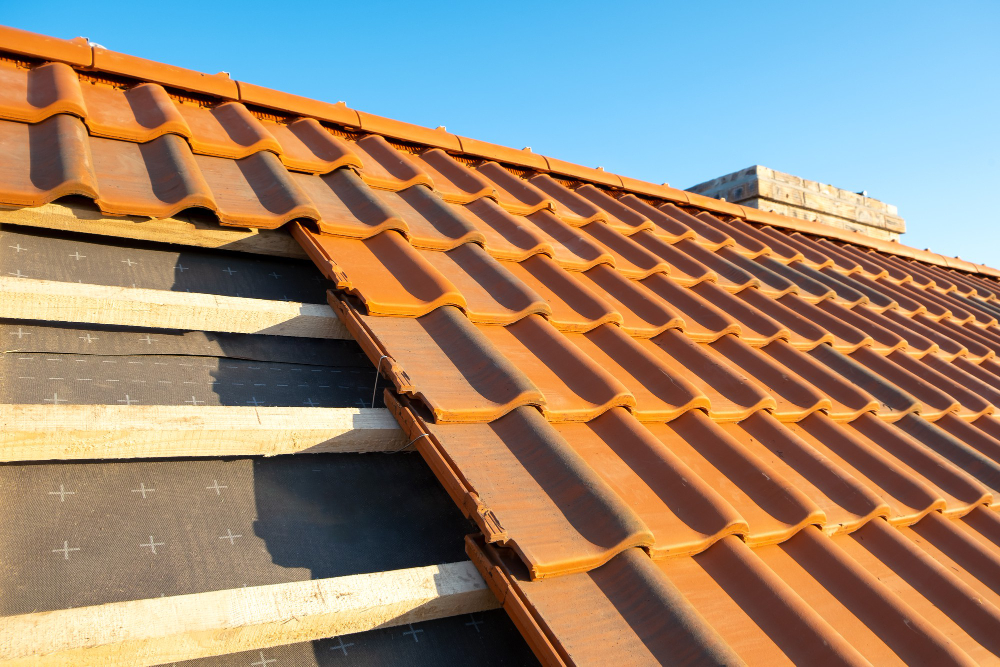In areas where intense sunlight and prolonged summer heat are the norm, your roof does far more than just protect against rain. It plays a vital role in maintaining a cooler home and improving energy efficiency.
Choosing the right roofing material can limit heat absorption, lower air conditioning costs, and endure decades of strong UV exposure. This guide highlights the top roofing materials for hot climates, assessing their durability, cooling capabilities, and overall value.
Best Roofing Materials for Hot Weather
1. Metal Roofing
Metal roofs reflect much of the sun’s energy, keeping interior spaces cooler. Many modern options include reflective finishes that enhance their heat-repelling qualities.
- Pros: Highly durable (40–70+ years), lightweight, fire-resistant, recyclable, and excellent at reflecting heat.
- Cons: Higher initial cost and potential for noise during rain without proper insulation.
- Best For: Homeowners seeking longevity, low maintenance, and strong performance in extreme sun.
2. Clay Tiles
Clay tiles are a traditional favorite in hot climates due to their natural thermal resistance and airflow beneath each tile, which helps dissipate heat.
- Pros: Exceptional heat resistance, long lifespan (50+ years), classic Mediterranean or Spanish-style aesthetics.
- Cons: Heavy (requires strong roof framing) and higher installation costs.
- Best For: Homes in desert or coastal heat with a focus on timeless style.
3. Concrete Tiles
Concrete tiles offer similar benefits to clay but at a slightly lower cost. They can be shaped and colored to mimic other materials while providing solid heat resistance.
- Pros: Durable, customizable, and excellent for reducing heat transfer.
- Cons: Heavy weight, potential for color fading over time.
- Best For: Those wanting a balance between cost, style, and thermal performance.
4. Slate Roofing
Natural slate is dense and excellent at resisting heat penetration. While not as reflective as metal, it provides a long-lasting, high-end option.
- Pros: Extremely durable (75–100+ years), fire-resistant, and low maintenance.
- Cons: Expensive, heavy, and requires expert installation.
- Best For: Premium homes in hot regions where longevity and luxury are top priorities.

5. Cool Roof Shingles
These are specially designed asphalt shingles coated with reflective granules to minimize heat absorption.
- Pros: More affordable than premium options, available in many styles, easier to install.
- Cons: Shorter lifespan than metal, clay, or slate.
- Best For: Homeowners on a budget who want improved performance over standard shingles.
6. Green Roof Systems
Living roofs with vegetation provide reduce heat absorption by providing natural insulation while offering environmental benefits.
- Pros: Eco-friendly, excellent insulation, and stormwater management.
- Cons: High maintenance, structural requirements, and higher installation cost.
- Best For: Eco-conscious homeowners with flat or low-slope roofs.
Choosing the Best Roof for Tropical Climate
When selecting a best roof for hot climate, consider:
- Reflectivity: How well the material bounces sunlight away.
- Thermal Emittance: How effectively it releases absorbed heat.
- Durability: Resistance to UV damage, expansion, and cracking.
- Weight: Structural capability of your home.
- Budget: Balance between initial cost and long-term savings.
Conclusion
The best roofing material for a hot climate balances reflectivity, durability, and your home’s structural capacity. Metal and clay tiles excel at keeping heat out, while concrete and slate offer lasting strength. For budget-conscious homeowners, cool roof shingles provide a cost-effective improvement. By understanding your climate and priorities, you can choose a roof that keeps your home comfortable.


